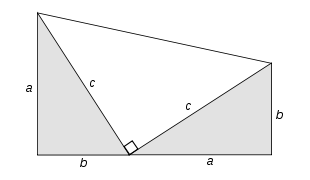A model of the natural numbers
We're going to see a model of the natural
A theory set of axioms is consistent when there appears some kind of contradiction that makes the axioms do not make sense
Peano's axioms introduce natural numbers from set theory. After exposing the axioms, some additional definitions (the sum, the product and the principle of good management) have been given. But are Peano's axioms consistent? That is, is there a model based on the assembly model that meets Peano's axioms? Let's see how to build a model of natural numbers from set theory
Note if we had a model, we would be reducing the consistency of numbers to that of set theory, and the set theory is consistent? At some point we have to stop descending, and you have to assume something as true without the possibility that it will be demonstrated. In 1930, He tested his famous theorems of incomprehensibility, which in a simplified way state the following:
- First theorem of incompleteness
In any consistent formalization of mathematics that is strong enough to define the concept of natural numbers, an affirmation can be constructed that cannot be demonstrated or refuting within that system - Second theorem of incompleteness
Any consistent set may be used to prove itself
These results were very negative for the philosophical approach to mathematics, proposed by David Hilbert, known as Hilbert's formalization program. He had proposed that the consistency of more complex systems, such as actual analysis, had to be tested in terms of simpler systems. Finally, the consistency of all mathematics could be reduced to basic arithmetic
With his first theorem, Godel demonstrated that arithmetic is incomplete, and in this way it will be impossible for it to be used to demonstrate the consistency of any axiom system. The paradise devised by Hilbert did not exist, it was a utopia
Let's stop the logic and go back to the natural numbers. A model of Peano's axioms would be a triplet (\mathbb{N},0,s) with \mathbb{N} a set, 0\in \mathbb{N}, s|\mathbb{N}\rightarrow\mathbb{N} an application that would satisfy these axioms. It is not difficult to see that if we have two models, they should be the same, since given two models (\mathbb{N}_A, 0_A, s_A) and (\mathbb{N}_B, 0_B, s_B) Peano's axioms, the application f|\mathbb{N}_A\rightarrow \mathbb{N}_B defined by:
\begin{cases}f(0_A)=0_B \\ f(s_A(n))=s_B(n) \end{cases}
it's a bijection. Since we have to, there can only be one model of Peano's axioms, but we haven't defined any yet!
Logicians Gottlob Fregge and Bertrand Russell built models of Peano's axioms based on the intuitive idea that a natural number is the cardinal of an ensemble. That is, each natural number is the "essence" shared by the bijective (and finite) sets whose cardinal number is that cardinal number. Then a natural number would be defined as the equivalence case of those sets; in addition, zero corresponds to the empty set (actually, its equivalence class) and s applied to an assembly is to add an element that is not in the set (for each set of the equivalence class). However, this idea has serious logical difficulties, because, according to the laws of Zermelo-Fraenkel's axiomatics on which the current mathematics is based, put informally: "the whole of all sets is not a whole", the equivalence classes of bijective sets also do not form a set of
The model commonly used is that of the Hungarian nationalized American mathematician, János von Neumann, who not only made important contributions in many fields of mathematics, but in computer science with von Neumann's architecture, currently used in computers and in the manufacture of the first atomic bomb
The model devised by von Neumann begins with the definition of 0 as the empty set (\emptyset), and also defines an operator s acting on the sets by s(A)=A\cup(A)
Defines the set of natural numbers \mathbb{N}_0, such as the intersection of all closed sets under the action of s (that is, of all C sets such that s(C)\subset C) containing the empty set. Each natural number (understood as a set), is the set of natural numbers less than him:
\scriptsize\begin{cases}0=\emptyset \\ 1=s(0)=\emptyset\cup\{\emptyset\}=\{\emptyset\}=\{0\} \\ 2=s(1)=\{\emptyset\}\cup\{\{\emptyset\}\}=\{\emptyset,\{\emptyset\}\}=\{0,1\} \\ 3=s(2)=\{\emptyset,\{\emptyset\}\}\cup\{\{\emptyset,\{\emptyset\}\}\}=\{\emptyset,\{\emptyset\},\{\emptyset,\{\emptyset\}\}\}=\{0,1,2\} \\ \cdots \\ n=s(n-1)=\cdots=\{1,2,3,\cdots,n\} \end{cases}
The set \mathbb{N}_0, along with 0 and the "next" function s|\mathbb{N}_0\rightarrow\mathbb{N}_0, satisfies Peano's axioms

